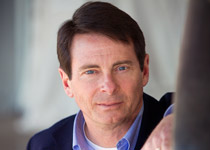Waypoints: Not one thing can be done
Why we’re not helpless to fix the pilot population
 News Flash: The general aviation pilot population is in decline.
News Flash: The general aviation pilot population is in decline.
Most disturbingly, there is no one thing you can do about it.
Notice I didn’t say there’s nothing you can do about it—but after years of study, it is clear there is no one thing that is going to reverse the trend under way for the past 30 years.
Most pilots agree that cost is a big reason more people don’t join our ranks. And while cost is certainly a significant factor, even if we could wave a magic wand and make the costs in sync with what many of us paid for flight training in the 1970s, we would not return to the pilot populations we saw during the disco era. For one thing, demographic changes under way are beyond our reach. The train has left the station on matters of decreased fertility, aging populations, wages, and immigration—societal changes the pilot community simply can’t control—although a few pilots I know have done their best regarding fertility rates.
E.M. Beck, a semiretired professor at the University of Georgia, pilot, and aircraft owner, recently shared his findings regarding the future of general aviation with the leadership at AOPA. Beck points out that the U.S. fertility rate is 1.86, whereas a rate of at least 2.11 is necessary to sustain the population. In other words, our population is aging. As the Baby Boomers enter their senior years, the percentage of people ages 18 to 64—their primary earning and learning to fly years—is lower than it’s been in decades.
But, you say, the overall population is higher than it was in the 1970s, so even if a lower percentage of the population is interested in learning to fly, we should still see growth or at least stability. Good in theory, but in fact society’s interests have changed. When I was growing up, the Apollo space program dominated the news. The nation was fascinated by the notion of going to the moon. Kids bought airplane and spacecraft models. We read aviation magazines. And astronauts visited us in schools. Today, the United States has no manned space program and most people’s experience with aviation is on the airlines, which is more akin to riding the bus than the elegance and high-speed transportation we experienced decades ago. Aviation is not nearly as sexy as it once was.
And even if it were, most can’t afford it, Beck points out. According to his research, from the late 1960s through about 1980, the price of a new Cessna 172 equated to about 162 percent of the median white family’s income in the United States. In 2012, that price had escalated to 512 percent of the median white income; with Cessna’s price increases in the past couple of years, the delta is even larger today. Change the equation to include all family incomes, not just white families, and the delta grows further still.
Add in rising higher education costs for the average family; declining retirement benefits from most companies; families choosing larger, more expensive housing and multiple cars; cellphone and cable TV bills; and all the other accoutrements we crave in the twenty-first century and there’s little left over for activities such as flying. Boating, skiing, golfing, and other activities are feeling the same pinch that aviation is.
Clearly, there is little we as pilots can do to shift these societal changes. What we can do, however, is make sure that we showcase the aviation experience to those most likely to be interested and most likely to join us. AOPA research shows that people ages 18 to 59 who are involved in extreme sports, motorcycles, and car racing and collecting have the highest propensity to be interested in aviation. Who do you know who climbs mountains, joins friends on a weekend motorcycle ride, or restores cars? Millions fit that profile, and yet we only need a couple of hundred thousand to turn around the declining pilot population trend. What have you done lately to share your positive aviation experiences with people in this demographic?
Finally, there are more than 500,000 people under age 75 who hold a pilot certificate, but are not actively flying. The AOPA Rusty Pilot program is successfully bringing many of these back, but there’s plenty more to do. These pilots have already cleared the learning-to-fly hurdles. They just need a thoughtful pilot like you to encourage them back into the fold.
As I wrote at the beginning, there is no one thing we can do, but there are many things we all can do. Share your ideas. Let’s get started.
Email [email protected], Social: Follow on twitter@tomhaines29
Watch Editor in Chief Tom Haines every Thursday on AOPA Live This Week, where he shares his passion for flying.



